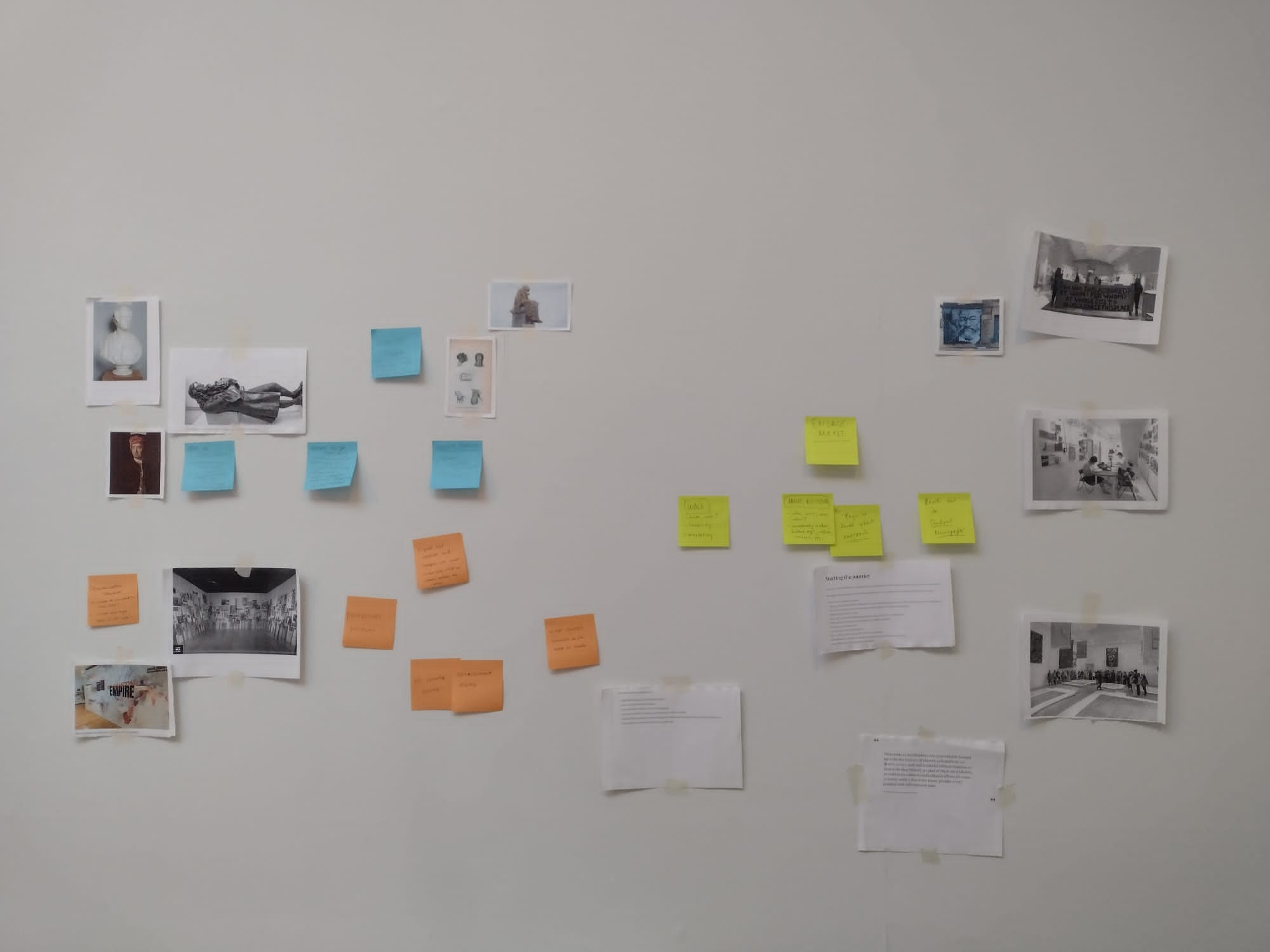
In the initial seminar of this project, we were provided with the Talbot Rice Gallery research guide. Our objective is to uncover the narrative behind Edinburgh’s Old College. In our discussion on “How can a contemporary art gallery establish productive and critical connections to its historical spaces while engaging audiences?” we engaged in a comprehensive discourse on this fundamental subject. Focusing initially on the keywords “contemporary” and “history,” I focused on the building itself in the first place. Edinburgh’s Old College was founded during the Enlightenment to promote education and facilitate communication. Furthermore, it once served as a Natural History Museum, housing exotic animal specimens such as platypuses and a puma from distant lands. When it merged with another white box space to become the gallery in 1975, it took on the responsibility of showcasing modern and contemporary art.
During our research division, I chose to explore “The History of Access to Education,” explicitly examining how gender has influenced educational opportunities throughout time for my eight-month-long research topic. After class, I began envisioning various possibilities for presenting this extensive subject matter – through a piece, audio, or installation artwork. Following brief discussions within our team, we decided our first step would be delving into library resources.
Fortunately, ample documentation is available regarding TRG’s architectural history; therefore, after obtaining permission from the library authorities, we spent an afternoon brainstorming amidst numerous documents to establish a solid background for our overall research by identifying relevant aspects of our topic.

Notes on group division of labour
Our highly efficient team enables us to advance the entire project with just two weekly courses and meetings. We acquired numerous innovative ideas during our visit to TRG and meeting with James. For instance, can we delve into the intricate details of the historic college buildings, including Greek stone columns and three-dimensional reliefs? Furthermore, an initial concept for a display began to take shape; we intend to design a compact exhibit featuring pictures and corresponding text that can be easily accessed from a shelf-mounted archive at any given time—a genuinely artistic installation. When considering how viewers will interact with this display, our team devised engaging activities for gallery visits. Leveraging James’ provided floor plan and distinctive architectural markings, we aim to explore the gallery’s architecture while guiding visitors in reflecting upon its colonial cultural elements—stimulating their contemplation of the space.

Leave a Reply